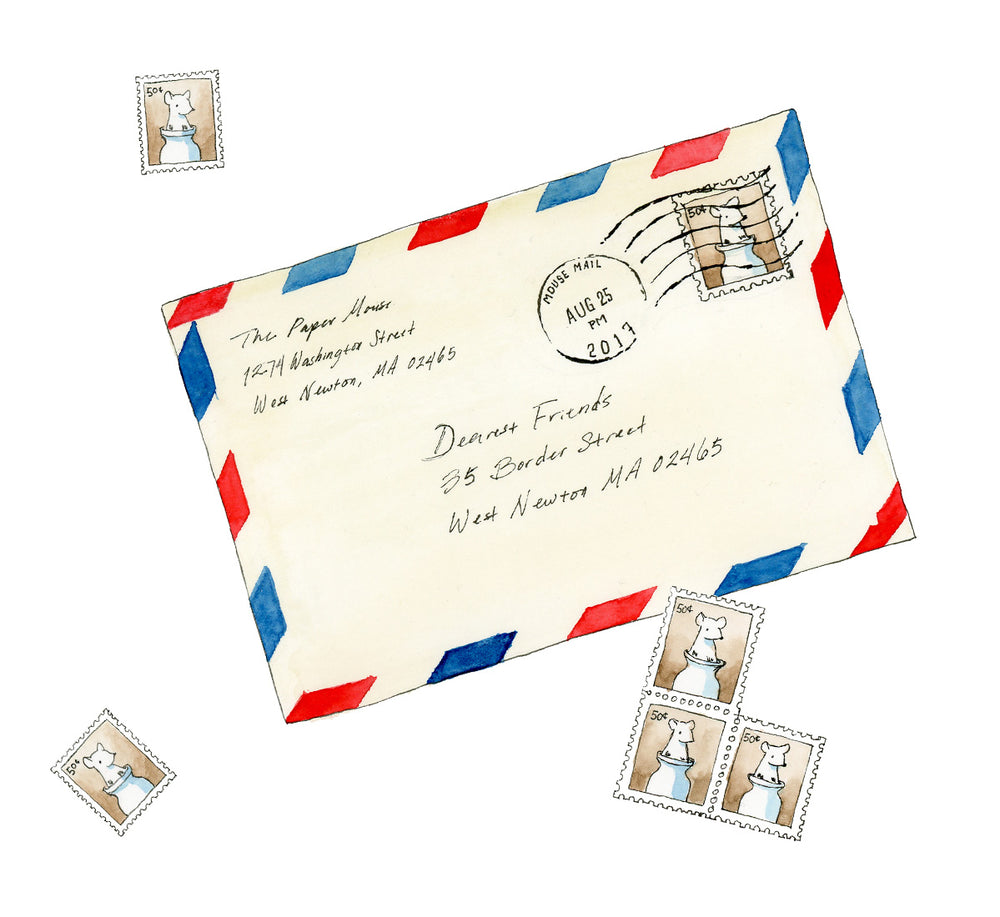How to Choose a Planner

Many of us rely heavily on our planners. Without them, we wouldn’t know where to be, what to work on, whose birthday it is, and any number of other important things. So having a good planner that suits us can make the difference between a frustrating and disorganized daily scramble and smooth sailing.
But choosing a planner isn’t quite as easy as choosing some other types of stationery. Planners have a lot of variables, and the amazing organization system your friend swears by won’t necessarily work for you. Finding the right planner for you will depend on both the planner’s features and on your own habits and natural tendencies.
In this post, we share planner features to consider when you’re starting to get organized and tips on taking your own preferences into consideration.
Planner Features
Dated vs. Undated Planners
Planners are available either dated, with the days preprinted for the year, or undated, where you must write the dates in yourself. Each option has advantages and inconveniences. Dated planners, of course, make it easy to flip ahead and write down plans that are coming up in advance. If you use your planner to schedule plans and appointments throughout the year, a dated planner is the natural choice. Dated planners are what we usually think of when we imagine getting organized, and they’re perhaps the most popular choice.
But don’t dismiss undated planners—especially these days, when many of us use digital tools to help us keep track of appointments, and rely on our planners for other things. Undated planners are useful when you don’t use a planner consistently throughout the year. Sometimes you may have busy weeks or big projects that require a lot of focus, and it can be helpful to pick up your planner and schedule in blocks of time. If you find you often have a lot of blank pages in your planner at the end of the year, this may be a sign that an undated planner would be more useful for you. Undated planners are great for scheduling specific projects that don’t follow a traditional yearly calendar. They’re also handy, of course, if you’re starting a new planner in the middle of the calendar year and don’t want to waste paper.
Undated planners can look very much like dated planners with weekly or monthly layouts, giving you the option to write in dates if you want to schedule specific blocks of time. Or they can be planner pads, which come in the form of daily or weekly to-do lists, so you can focus on the day/week at hand and plan out specific tasks.
Planner Layouts
Broadly speaking, planners come in three layouts, or in some combination thereof: daily, weekly, or monthly. Daily planners show you one day at a time, giving you lots of space to write lists, take notes, or schedule hourly tasks. They can serve as an enhanced notebook or notepad. If you often work on paper, jotting down notes and to-dos or sketching out ideas, a daily planner is a useful companion.
- Hobonichi’s A6 Original Planner and A5 Cousin Planner have a page-per-day format with a versatile grid background. You can divide the grid up into a daily schedule, or leave it open for daily notes and musings.
- The undated Mnemosyne Daily notebook is designed for writing daily checklists, perfect for anyone who relies on their to-do list.
Weekly planners zoom out a bit, showing you a week at a time. These can be arranged horizontally, with the days arranged in rows where you can write down tasks and appointments, or vertically, with the days arranged in columns where you can schedule tasks by the hour. Weekly planners are very useful for those with a busy schedule who need to look at the week ahead and see all their commitments. They’re especially popular for work or school.
- The Baronfig Confidant Planner (available dated or undated) has a horizontal format, with pages divided into rows for each day.
- Kokuyo’s Jibun Techo and Weekly Campus Planner both have a vertical layout, with each day of the week divided into an hourly schedule.
- The Paper Mouse Out and About Planner Pad is an undated notepad that lets you plan out tasks for the week ahead.
Monthly planners give the broadest overview, showing you the whole calendar month at a glance. These are great for writing down appointments and important dates, and they can also help you keep track of the big picture—for instance, if you’re scheduling multi-week projects over the course of a month.
- The Appointed Monthly Planner, available in medium and large sizes, is an undated planner with twelve calendar pages and space for notes in the margins.
- The Kokuyo Campus Monthly Planner is a dated monthly planner with extra pages for taking notes.
Size
Planner size is also an important decision, influenced by a couple of factors: what are you writing in your planner, and where are you using it? If you carry your planner around with you everywhere, a smaller planner is lighter and more convenient, but you’ll trade convenience for writing space. If you know you’ll mostly keep your planner on your desk, you may opt for a bigger planner that gives you more room to write.
- Midori’s Pocket Planners are adorably illustrated weekly/monthly planners that are small and lightweight.
- The Leuchtturm1917 Weekly Planner and Notebook is a medium-sized A5 planner that balances space and portability.
- The Appointed Year Task Planner is a full-sized planner that gives you ample room to write plans, notes, and tasks.
If you need lots of writing space but you also take your planner everywhere, you may want to consider a planner that can be integrated with other items you use regularly. For instance, the Hobonichi planner can be combined with a cover that includes wallet-like card slots and pockets you can use to carry other everyday necessities, and the Traveler’s planner can be tucked into their customizable notebook system, where you can also include pockets and pouches to carry other items.
Other Features
Many planners include other design features which can be either appealing and useful or overwhelming and superfluous, depending on your personal habits. These include things like spaces for writing your monthly and weekly goals, trackers for keeping track of your meals, designated to-do lists with checkboxes, daily moon phases, and other features that may either inspire or annoy you depending on how you intend to use your planner.
- In addition to a weekly layout and monthly calendars, The Appointed Year Task Planner includes spaces to write important dates and monthly goals, weekly priorities and a weekly to-do list, and additional notes.
- The Original and Cousin size Hobonichi planners’ daily pages include the phase of the moon, a meal tracker, and a daily quotation; the planners also include monthly calendars, a yearly index, and additional pages with helpful reference information.
- Baronfig’s undated Do Work Journal helps you break down a project into milestones, goals, and tasks, with a structure designed for daily, weekly, and quarterly planning.
Think about Your Own Habits
A well-designed planner can make a big difference when you’re getting organized, but it’s only half the equation. After all, the features are only as good as what you make of them. So finding the right planner can also require a little soul searching.
Have you tried in the past to stick to a particular planner system that’s popular or attractive but then found that your plans always slide into disarray? This doesn’t mean you’ll never get organized—but it’s a sign that the strategies you’re trying might not be compatible with the way you think.
Instead, think about how you naturally take notes and jot things down. Do you make a lot of lists? A planner with preprinted lines and checkboxes might help you out. Do you doodle and sketch your ideas? A looser, more customizable structure might suit you better. Looking for a planner whose layout enhances your natural note-taking habits will help you organize information in a manner that you can maintain instead of getting frustrated and giving it up.
That’s not to say that you should never try a new system or aspire to enhance your organization skills—but if you currently track your plans by scribbling them on a napkin, then switching to a detailed hour-by-hour itinerary will probably be hard to maintain. The more you work with your natural tendencies instead of trying to follow someone else’s system, the less likely you are to skip over sections of your planner or revert to writing on scraps of paper.
Some Questions to Ask Yourself
To help you decide on the features you want in a planner, think about the following questions.
What do you need to keep track of? Make a list of the things you’re hoping to keep track of in your planner. Hourly tasks? Daily appointments? Homework? Birthdays? Project steps? To-do lists?
What are your goals? What feels disorganized in your life that you’re trying to get a handle on? Are you planning a specific project, keeping track of work commitments, or hoping to consolidate all the different threads of your life in one convenient spot?
Do you use other tools? Do you already use a phone or computer to track certain information? Will the features of the planner you're considering be redundant?
Where and when will you use your planner? Do you need to carry it around everywhere, or can you leave it on a desk?
Does structure hem you in or help you? Do you freeze up at the sight of a blank page? Do you feel constricted by preprinted features?
It may take some trial and error to find the planner that’s best suited to your needs, and your needs may change over time. But experimenting with different organization systems is worth it in the long run: a planner that suits you well can help you make sense of all the information you keep track of and give you a sense of competence and control. Happy planning!



Leave a comment